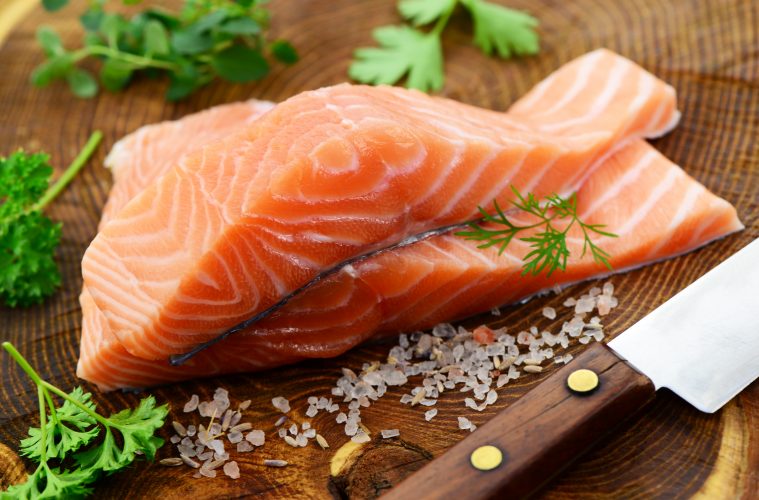SALMON is sold in many different forms. Fresh salmon is available whole or in steak or fillet form. Salmon is also available frozen, canned, dried or smoked.
Just as with any seafood, it is best to purchase salmon from a store that has a good reputation for having a fresh supply, or buy branded products with a good reputation.
Fresh whole salmon should be displayed buried in ice, while fillets and steaks should be placed on top of the ice. If you are purchasing a whole fish and want to eat the skin, have the salmon scaled.
Smell is a good indicator of freshness. Since a slightly “off” smell cannot be detected through plastic, if you have the option, purchase displayed fish as opposed to pieces that are prepackaged. Once the fishmonger wraps and hands you the fish that you have selected, smell it through the paper wrapping and return it if it does not smell right.
When storing all types of seafood, including salmon, it is important to keep it cold, since fish is very sensitive to temperature. Therefore, after purchasing salmon or other fish, make sure to return it to a refrigerator as soon as possible. If the fish is going to accompany you during a day full of errands, keep a cooler in the car where you can place the salmon to make sure it stays cold and does not spoil.
The temperature of most refrigerators is slightly warmer than ideal for storing fish. Therefore an easy way to ensure maximum freshness and quality is to place salmon, which has been well wrapped, in a baking dish filled with ice. The baking dish and fish should then be placed on the bottom shelf of the refrigerator, which is its coolest area. Replenish ice once or twice per day.
The length of time that salmon can stay fresh stored this way depends upon how fresh it is, i.e. when it was caught. Fish that was caught the day before you purchased it can be stored for about four days, while fish that was caught the week before can only be stored for about one or two days.
The best ways to cook salmon are by using methods that will keep it moist and tender. Salmon can be easily overcooked and become dry, so be sure to watch your cooking times.
A Few Quick Serving Ideas
Combine left-over cold salmon with greens and vegetables for a delicious salad. Serve seared or grilled salmon over wholewheat pasta. Top with a sauce made with olive oil, dill weed, lemon peel, spring onions and black pepper. Serve cold, mixed with mayonnaise or yoghurt

